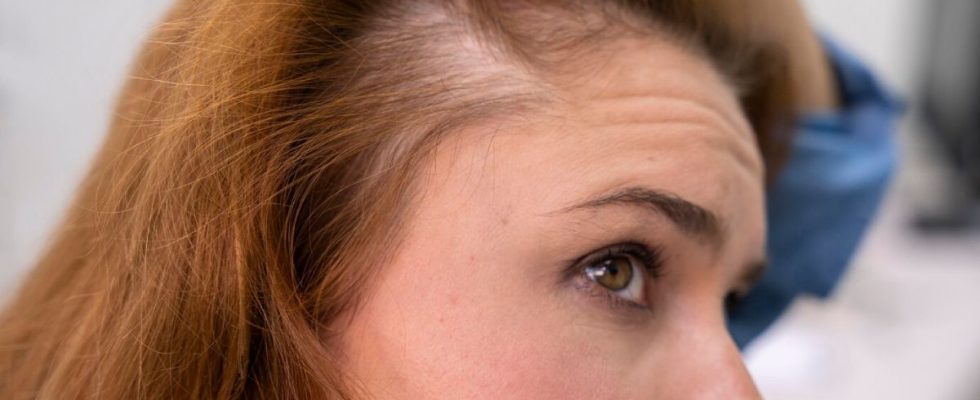Ever heard someone say that wearing a hat too often will make you go bald? Or that washing your hair every day leads to hair loss? Hair loss is a common concern, but it’s wrapped in plenty of myths that can make things confusing. Knowing what’s true and what isn’t can help you better understand your hair, take control of any changes, and make informed choices. In this post, we’ll explore some popular myths, reveal the real causes of hair loss, and introduce ways to manage it with a little help from wigs and extensions.
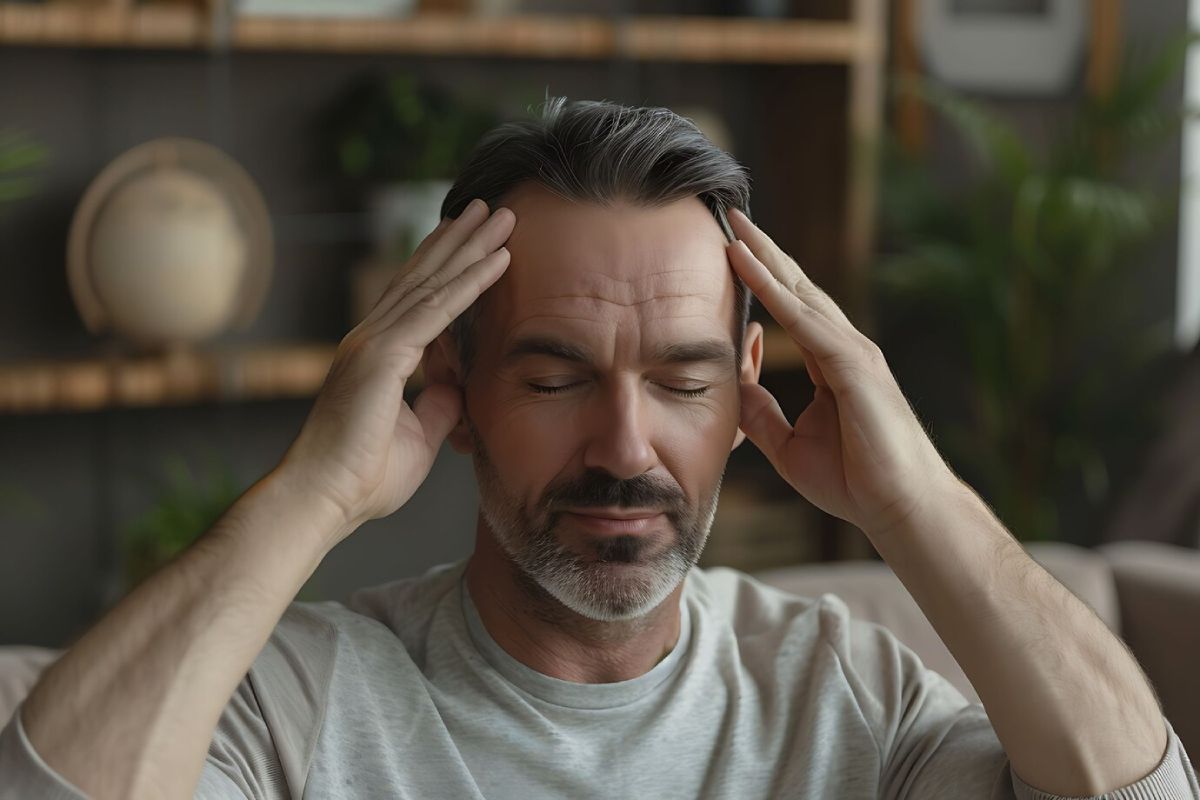
Common Hair Loss Myths – What’s False and Why?
Wearing a Hat Causes Baldness
This is a myth that just won’t quit. People often believe that wearing hats too often causes hair to thin by “suffocating” the scalp. The truth? Hair follicles get their nourishment from the bloodstream, not the surrounding air. Wearing a hat might flatten your hair temporarily, but it won’t affect your follicles or lead to baldness.
That said, dirty hats or tight ones might irritate your scalp, leading to itchiness or minor hair breakage, but that’s as far as it goes. If you love your hats, there’s no need to stop wearing them out of fear of hair loss.
Shampooing Too Often Makes Your Hair Fall Out
It’s understandable why this myth has taken hold—people often notice strands of hair washing away in the shower and panic. But the reality is, hair that sheds during washing is already in the shedding phase (known as the telogen phase).
The average person loses 50 to 100 strands per day, and washing just makes that loss more noticeable. If your hair feels dry or brittle, it might be due to using harsh shampoos too often, not because shampooing causes balding. Try opting for gentle, sulphate-free shampoos if this is a concern, but don’t fear the shower!
Stress Will Make You Bald Overnight
It’s true that stress can have an impact on your hair, but not in the instant, dramatic way that some imagine. Significant stress can disrupt the natural hair cycle, pushing more hairs than usual into the resting phase, which causes temporary hair shedding known as telogen effluvium.
However, this process takes several months to show up—stress today won’t make you bald tomorrow. And the good news? This type of hair loss is often reversible. Once the stress is under control, hair usually grows back. So, while stress management is important, it isn’t the direct villain in sudden, extreme hair loss stories.
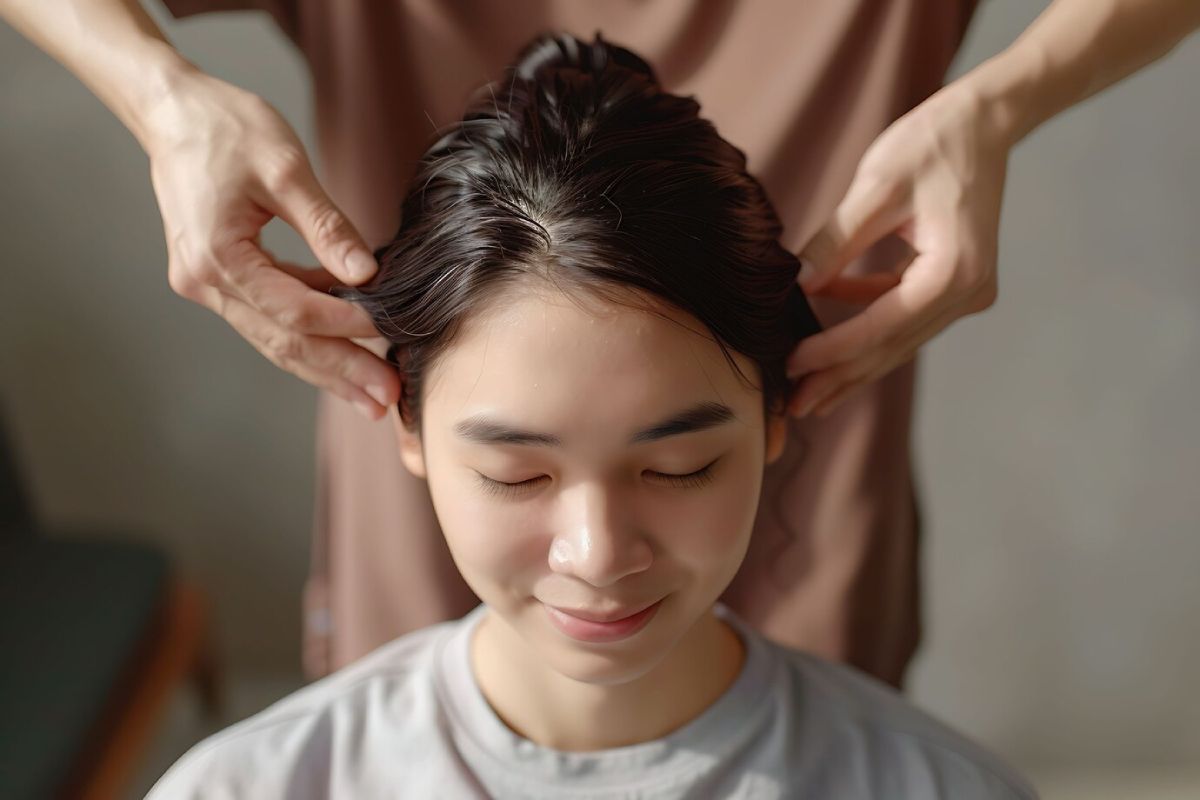
Only Men Experience Hair Loss
Men may experience more visible hair loss due to male pattern baldness, but women are not immune. Hair thinning and shedding are also common in women, especially during hormonal shifts like pregnancy, menopause, or as a result of conditions such as polycystic ovary syndrome (PCOS).
The pattern of hair loss may look different—women often experience thinning all over the scalp rather than a receding hairline—but the underlying reasons can be similar. So if you’re a woman dealing with hair loss, you’re not alone, and solutions are available for you too.
Hair Loss is Permanent
Many people think that once hair starts falling out, it’s gone for good. That’s not always true. Some forms of hair loss, like those caused by stress, poor diet, or illness, are temporary and improve once the underlying issue is addressed. Even certain medical conditions like alopecia areata, where hair falls out in patches, can sometimes see spontaneous regrowth.
On the other hand, genetic hair loss like androgenic alopecia (male or female pattern baldness) tends to be progressive. However, with the right treatments—whether medical or lifestyle-based—it’s often possible to slow down or manage the process. The key is early intervention and realistic expectations.
Real Causes of Hair Loss – What Science Says
Genetic Factors (Androgenic Alopecia)
The most common cause of hair loss in both men and women is androgenic alopecia, often referred to as male or female pattern baldness. It’s a hereditary condition, meaning if your parents or grandparents experienced thinning hair or balding, there’s a chance you might too.
The culprit behind this type of hair loss is a hormone called dihydrotestosterone (DHT), which shrinks hair follicles over time, making hair grow thinner and eventually stopping growth altogether. While this condition isn’t fully reversible, there are treatments available to slow it down, like minoxidil or finasteride.
Hormonal Changes
Hormones play a huge role in hair health. Many women notice increased hair shedding during pregnancy, postpartum, or menopause, and conditions like PCOS and thyroid disorders can also trigger thinning. These hormonal shifts affect the hair growth cycle, causing more strands to enter the shedding phase.
The good news is that in many cases, the hair will regrow once the hormones stabilise. For example, postpartum hair loss is usually temporary, with new growth appearing within a few months. However, it’s important to speak with a doctor if the shedding seems excessive or persists longer than expected.
Nutritional Deficiencies
Your hair needs the right nutrients to grow, and deficiencies in certain vitamins and minerals can lead to hair shedding or thinning. Low levels of iron, vitamin D, zinc, and biotin are common culprits.
Eating a well-balanced diet with plenty of leafy greens, nuts, seeds, and lean protein can help keep hair healthy. If you suspect you’re lacking in a specific nutrient, consulting with a healthcare provider and getting blood tests can confirm whether supplements might be necessary.
Stress and Lifestyle Factors
While extreme stress may not make you bald overnight, chronic stress can still be a problem for hair health. It can trigger telogen effluvium, a condition that shifts a higher percentage of your hair into the resting and shedding phase. This type of hair loss tends to resolve within six to nine months, provided the stress is managed.
Other lifestyle factors also play a role—things like irregular sleep, overuse of heat styling tools, harsh chemical treatments, and even smoking can weaken hair over time. Taking care of your overall well-being can have a positive impact on your hair, too.
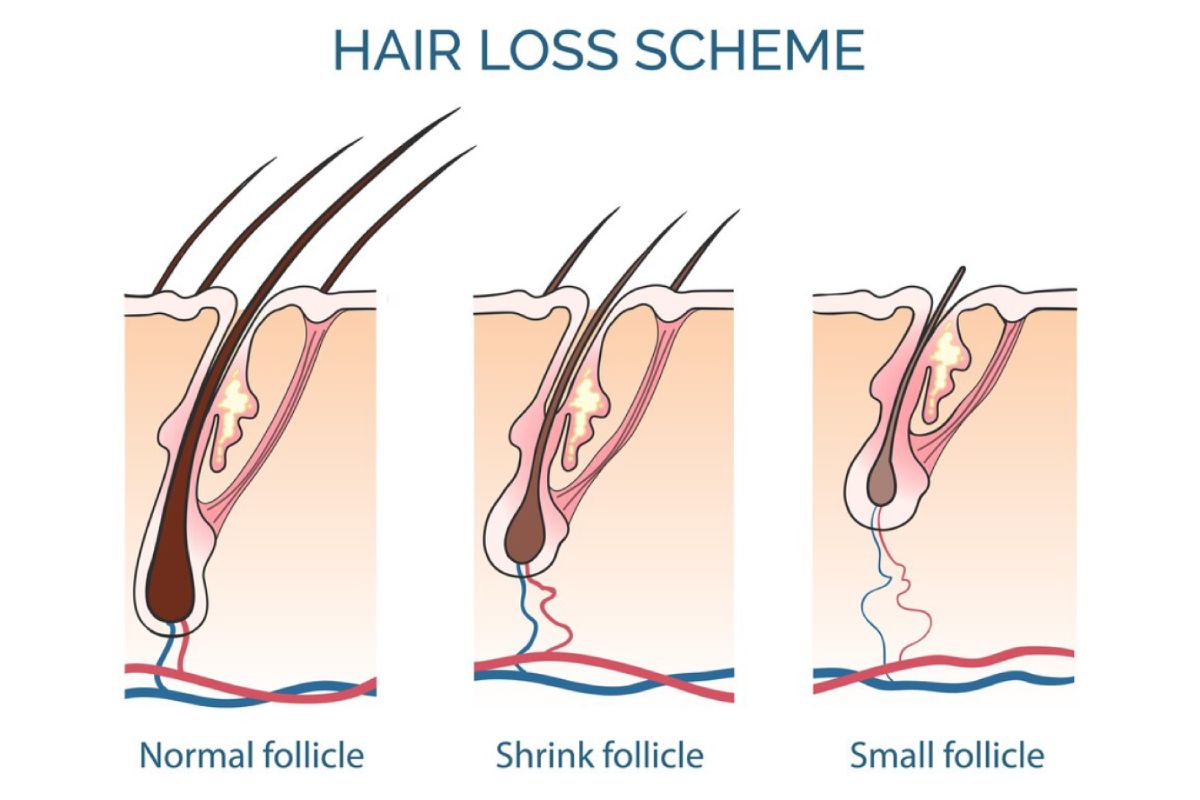
Solutions and Alternatives – Managing Hair Loss
Medical Treatments
If hair loss is becoming a concern, there are medical treatments available that can help slow down or even reverse the process to some extent. One popular option is minoxidil, a topical solution available over the counter. It works by increasing blood flow to hair follicles, stimulating growth, and prolonging the growing phase. Consistency is key, as results can take several months to show and stopping treatment may lead to hair loss resuming.
Another treatment for men is finasteride, an oral medication that blocks the production of DHT, the hormone responsible for shrinking follicles in androgenic alopecia. However, it’s prescription-only and comes with potential side effects, so a doctor’s guidance is essential.
Hair transplants are also an option for those looking for permanent results. This procedure involves moving healthy hair follicles from one area of the scalp to a thinning or bald area. While effective, it can be costly and involves some recovery time. Early intervention is ideal, so it’s best to consult a dermatologist or trichologist at the first signs of significant hair loss.
Natural Remedies and Lifestyle Changes
If you’re not ready for medical treatments, there are several natural approaches to help manage hair health. Scalp massages with essential oils, such as rosemary or peppermint oil, can improve circulation and encourage hair growth. Some people also find success with supplements like biotin, collagen, and omega-3 fatty acids, though it’s always good to get nutrients from whole foods when possible.
Reducing stress is another powerful way to support healthy hair growth. Activities like yoga, meditation, or simply prioritising self-care can help balance the stress hormone cortisol, which plays a role in hair thinning. Combining these practices with a healthy diet, good sleep hygiene, and gentle hair care can improve your hair over time, even if they don’t offer instant results.
Styling Options – Wigs and Hair Extensions as Alternatives
Wigs: A Stylish, Temporary Solution
For people dealing with significant hair loss or thinning, wigs offer an immediate way to regain confidence and change up your look. Thanks to advancements in technology, modern wigs are more comfortable, breathable, and natural-looking than ever before. Whether you’re looking for synthetic or human hair wigs, the variety of styles, colours, and lengths means there’s something for everyone.
Another benefit of wearing wigs is that they protect your natural hair underneath. This can be helpful if you’re undergoing treatment for hair loss or trying to give your scalp a break from heat styling and chemical treatments. With minimal maintenance, wigs can be a game-changer, whether you need them for a special occasion or everyday wear.
Hair Extensions: A Confidence Boost with Versatility
If you’re dealing with thinning hair rather than complete hair loss, extensions might be the way to go. Extensions add volume and length, giving your natural hair a fuller appearance. There are many types to choose from, including clip-ins (for temporary use), tape-ins, and sew-ins (for longer wear).
It’s essential to have extensions professionally installed to avoid putting excess tension on your natural hair, which could cause breakage or further thinning. Regular care, such as gentle detangling and moisturising, will help keep both your extensions and natural hair healthy.
Psychological Benefits of Wigs and Extensions
Hair loss can take a toll on mental health, impacting self-esteem and confidence. Wigs and extensions aren’t just about aesthetics—they offer emotional relief and a sense of normalcy for many. Whether it’s the ability to leave the house without worrying about thinning hair or the joy of experimenting with new looks, these styling options can improve quality of life.
It’s also important to normalise the use of wigs and extensions. More and more people are wearing them as a fashion statement, regardless of whether they have hair loss. Embracing wigs or extensions as part of your routine can help remove the stigma and make them feel like an empowering choice.
Visiting a Professional Stylist for Expert Recommendations
When dealing with hair loss, trusted professional stylists like the people from Amaraa Hair Salon Perth can offer invaluable insights beyond DIY treatments and internet advice. While they aren’t doctors, experienced stylists encounter various hair concerns daily and can guide you toward practical solutions suited to your situation.
Personalised Product Recommendations
Not all shampoos, conditioners, and treatments are created equal. A stylist can recommend hair care products tailored to your scalp condition and hair type—whether you need something to address dryness, breakage, or sensitive skin. They may also steer you toward salon-quality products that are gentler and more effective than many over-the-counter options.
If you’re unsure whether your hair loss is related to scalp issues like dandruff or product build-up, a stylist can help identify the problem and recommend clarifying treatments or soothing solutions to restore balance.
Scalp Treatments and Low-Level Laser Therapy
Many salons offer in-salon scalp treatments that deeply cleanse and nourish the scalp, creating an optimal environment for healthy hair growth. Some stylists also provide low-level laser therapy (LLLT), a non-invasive technique that stimulates blood circulation to the hair follicles. While this treatment doesn’t work for everyone, it can be a useful tool for those experiencing thinning hair at an early stage.
Haircuts and Styling Techniques for Thinning Hair
If your hair is thinning but not at the stage where you need wigs or extensions, the right haircut can make a world of difference. A stylist trained in cutting for thin or fine hair can recommend styles that create volume and movement, such as soft layers or a textured bob. They may also suggest blow-drying techniques and products like volumising mousse to help achieve a fuller look.
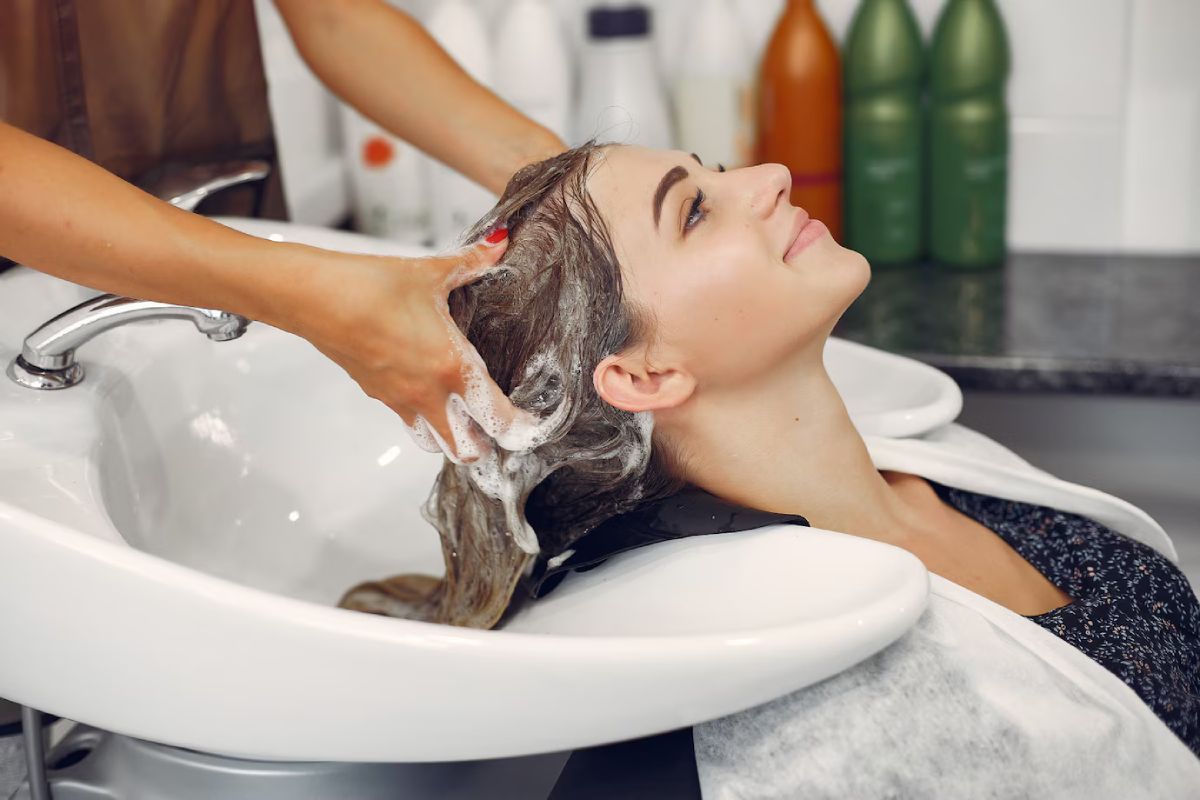
When to See a Trichologist or Dermatologist
Sometimes, a stylist may notice signs that indicate your hair loss might need medical evaluation. If your hair shedding seems excessive, comes with scalp irritation, or isn’t responding to regular care, they may suggest visiting a trichologist (a specialist in hair and scalp health) or a dermatologist. Having a stylist you trust can make it easier to take that next step toward getting professional help without delay.
Emotional Support and Confidence Boosts
A skilled stylist isn’t just there to cut your hair—they can also provide emotional support. If you’re feeling self-conscious about hair loss, they can offer styling tricks to make the most of what you have, whether it’s through a strategic parting, creative colour techniques, or experimenting with hair accessories. Just having someone listen and understand what you’re going through can be a confidence boost in itself.
Conclusion: Breaking the Myths, Embracing Solutions
With so much misinformation around hair loss, it’s easy to get caught up in myths that don’t help. Knowing the real causes of hair loss—from genetics to lifestyle factors—puts you in a better position to manage it effectively. Whether through medical treatments, natural remedies, or styling alternatives like wigs and extensions, there are plenty of ways to feel good about your hair again.
The key takeaway? Don’t let the myths dictate how you approach hair care. Early intervention, self-care, and professional advice go a long way in handling hair loss. And if wigs or extensions give you that extra boost of confidence, embrace them fully—they’re just another way to express yourself.
Feel free to share your experiences or questions in the comments below. You’re not alone in this journey, and there’s always something new to try or learn when it comes to hair care.
